Abstract
1. Hypotonic solutions added to human platelet-containing plasma cause a transient decrease of absorbancy of light at 610 mμ which is followed by a gradual increase of absorbancy.
2. When platelets are stored for 7 hr at 4° C the absorbancy changes with variations of osmolarity and their aggregation with adenosine diphosphate (ADP) remain the same. However, the reversal of absorbancy declines during storage of platelet-containing plasma.
3. Platelets are not aggregated by stearate. Platelets appear to be only slightly affected by stearate concentration higher than 0·8 mM, but oleate has no effect.
4. Hypertonic solutions of NaCl and urea cause increase in absorbancy of platelet-containing human plasma. Hypertonic sucrose solutions produce no more change than isotonic solutions. Hypertonic NaCl produces permanent increases in absorbancy. In human platelet-containing plasma the increased absorbancy caused by hypertonic urea is transient and declines.
5. The osmotic platelet changes occur in isolated platelets as well as in platelet-containing plasma.
6. The absorbancy of frozen and thawed platelet-containing plasma is not significantly altered by hypotonic solutions but the absorbancy changes caused by hypertonic solutions are similar to that of unfrozen plasma.
7. The immediate absorbancy changes caused by hypo- and by hypertonic solutions are the same at 5° C and 30° C and are therefore probably of a physical nature. The reversal of absorbancy and aggregation of platelets by added adenosine diphosphate have Q10 > 1 and are therefore probably of a chemical-enzymic nature.
8. Divalent cations and contact activation are not required for the osmotic platelet changes and 10-3 M-Cu2+ and Zn2+ do not interfere. Inhibitors of oxidative phosphorylation, electron transfer, sodium, potassium activated adenosine triphosphatases and adenosine triphosphate do not inhibit reversal of absorbancy of platelets exposed to hypotonic solutions. Cyanide, 5 × 10-3 M, fluoride, 1·23 × 10-2 M, iodoacetamide, 10-2 M, are moderately effective inhibitors. At hydrogen ion concentrations above pH 8, complete inhibition occurs.
9. N-ethyl-maleimide, 10-3 M, and mercloran inhibit completely reversal of absorbancy, indicating the necessity for sulphydryl compounds.
10. Intact platelets are essential for the reversal of absorbancy after hypotonic swelling. Osmotic changes by hypotonic solutions are independent of ADP aggregation of platelets.
Full text
PDF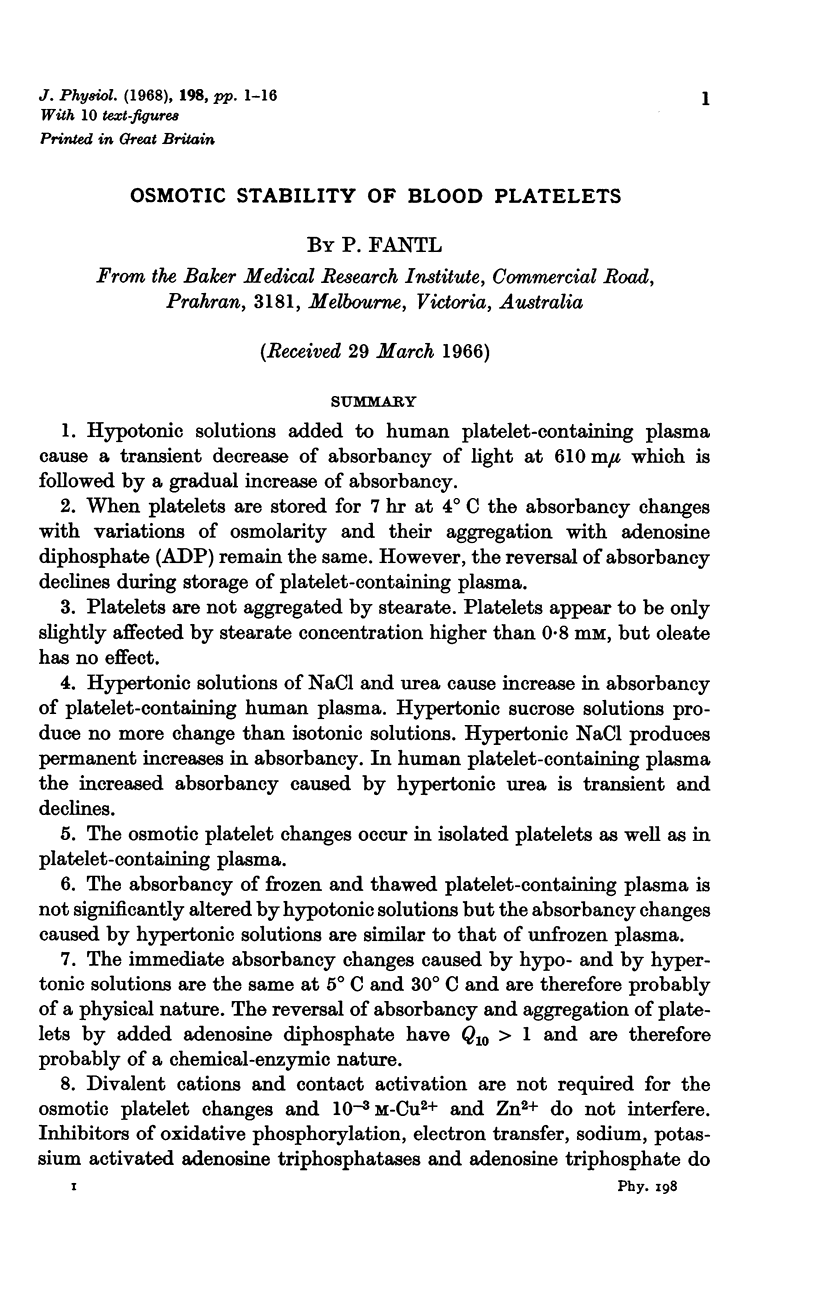
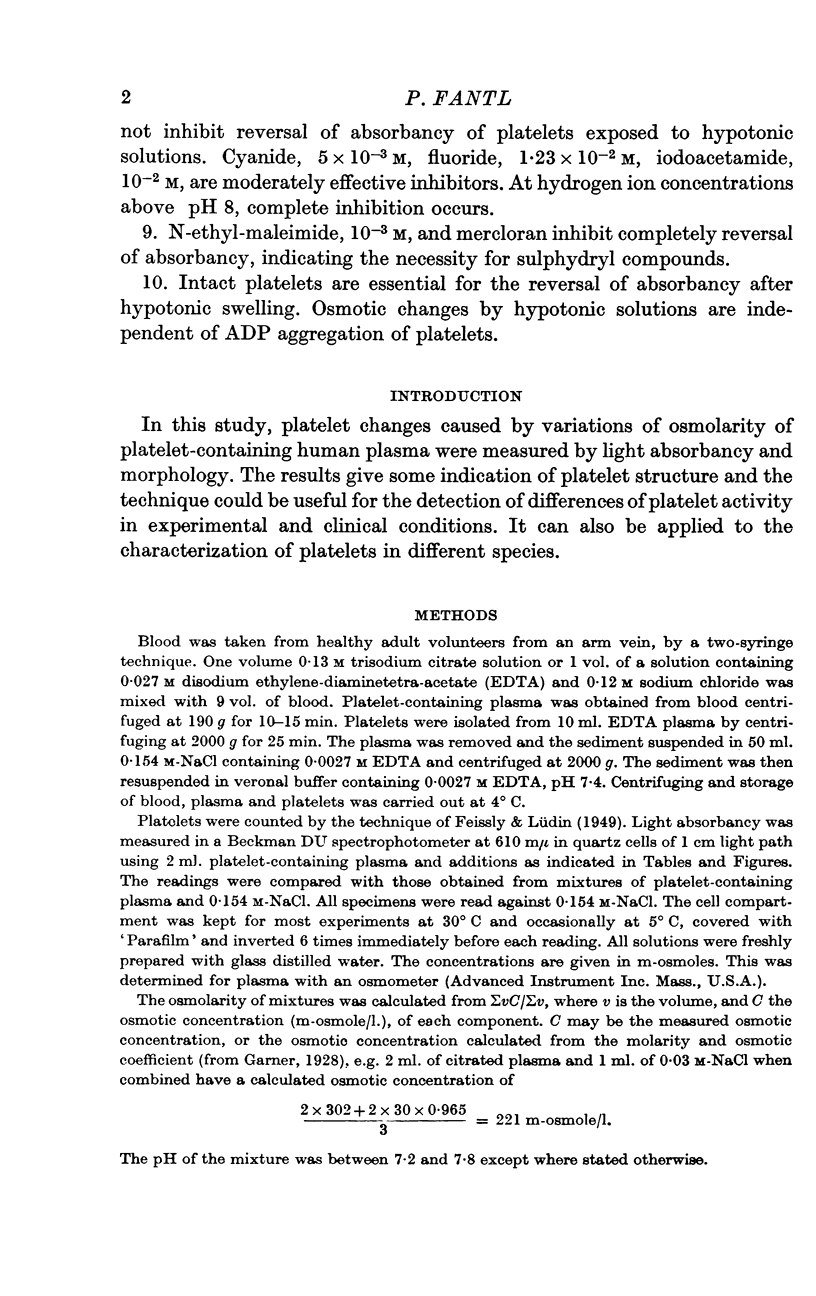
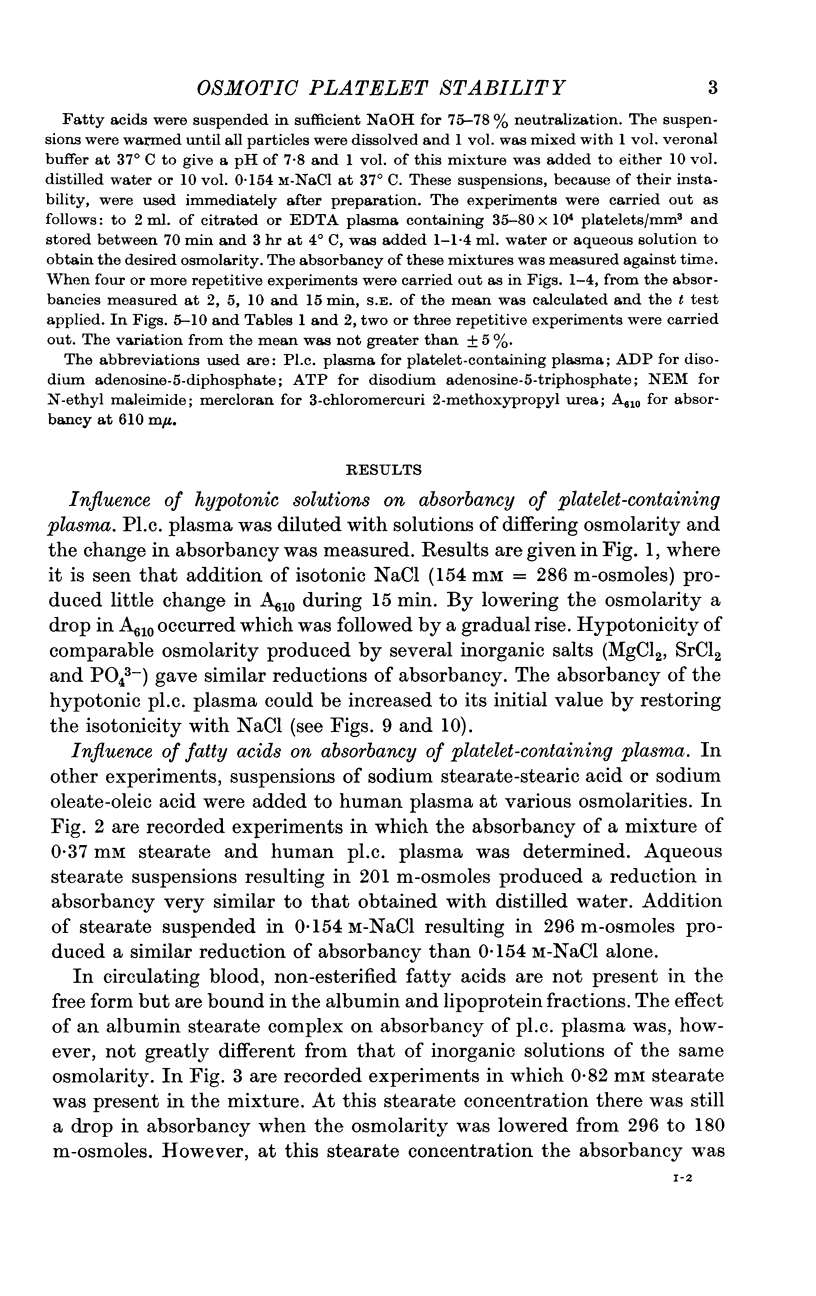
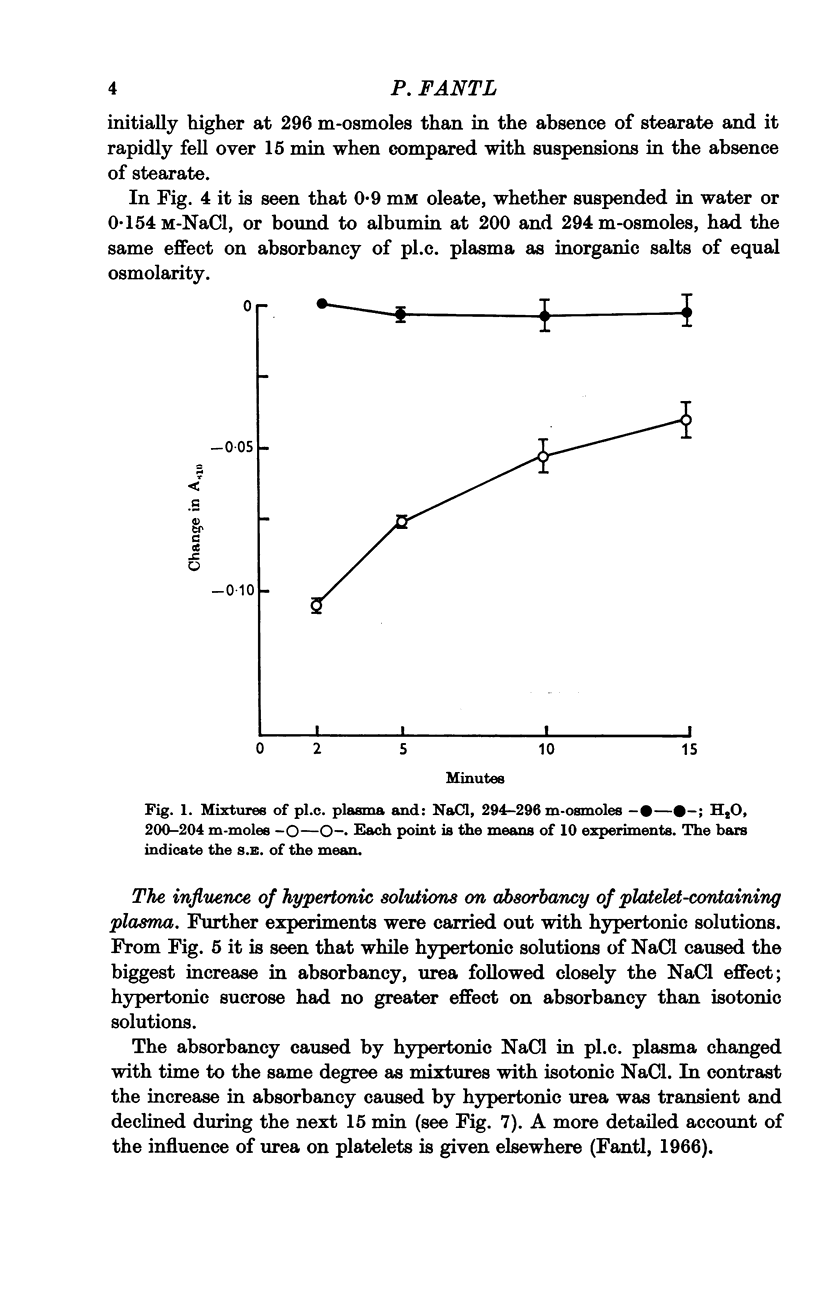
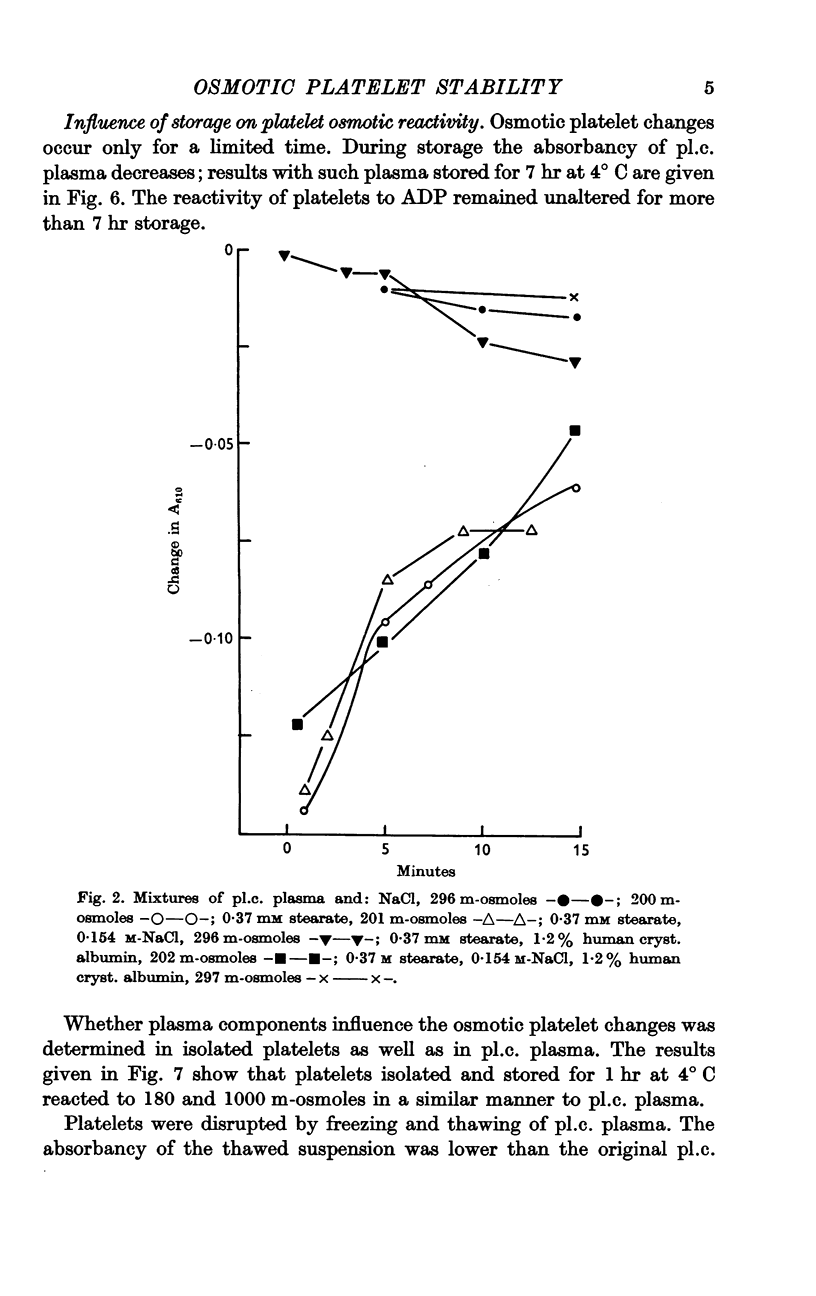

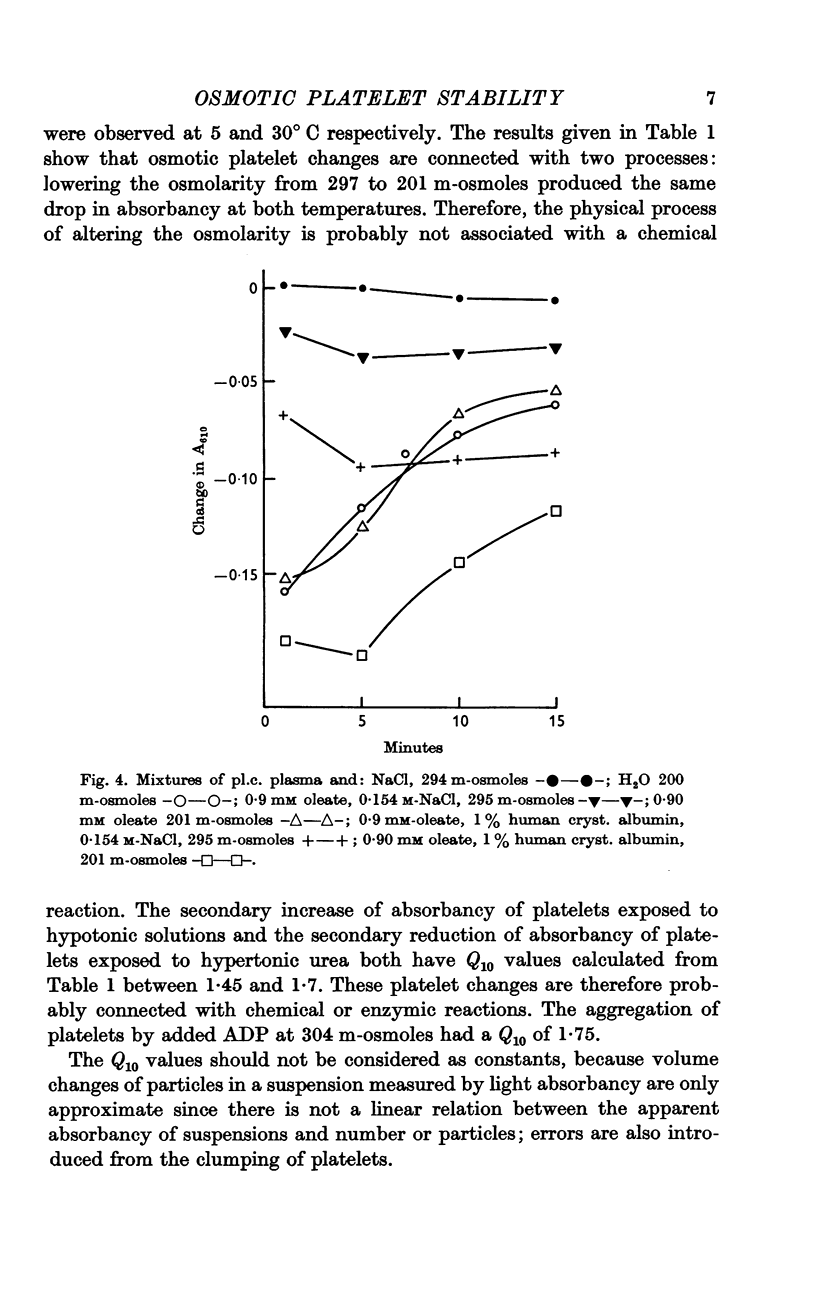
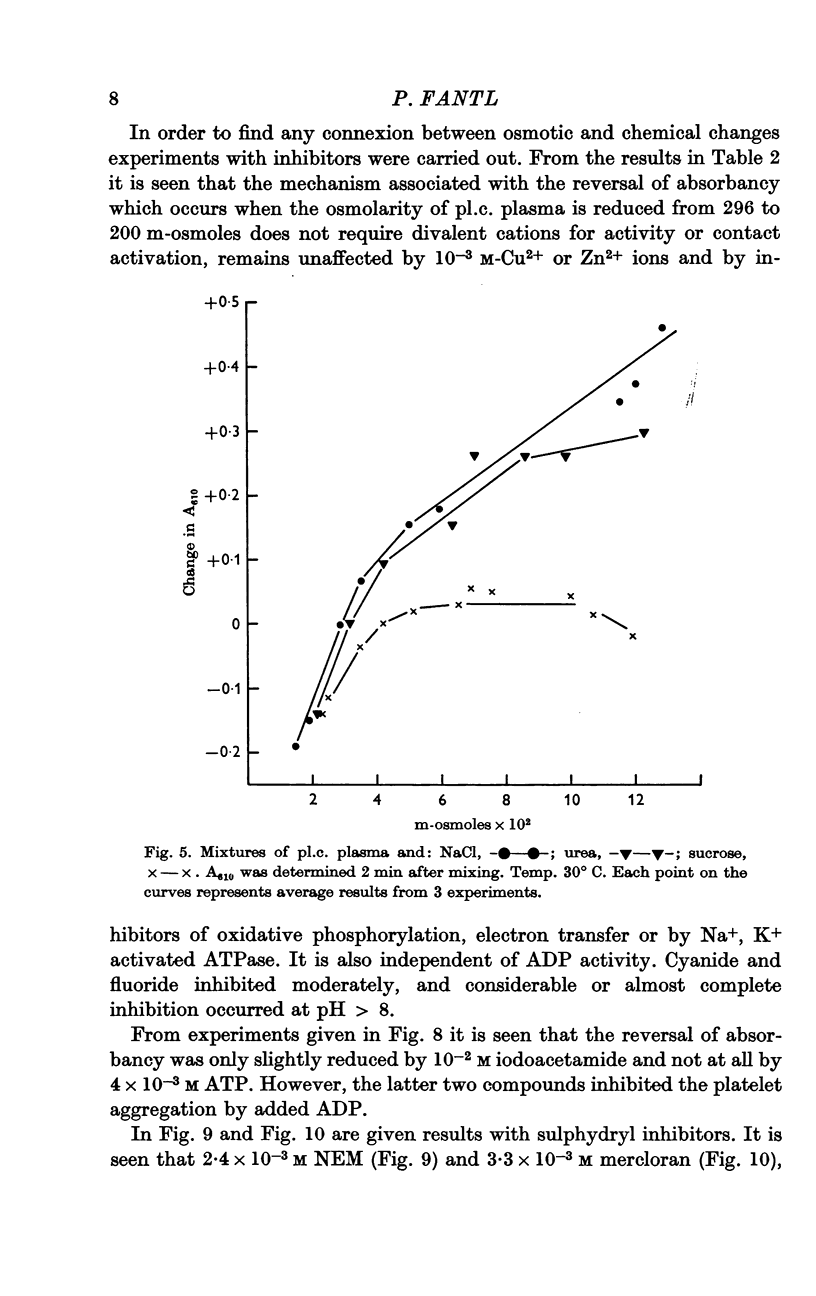
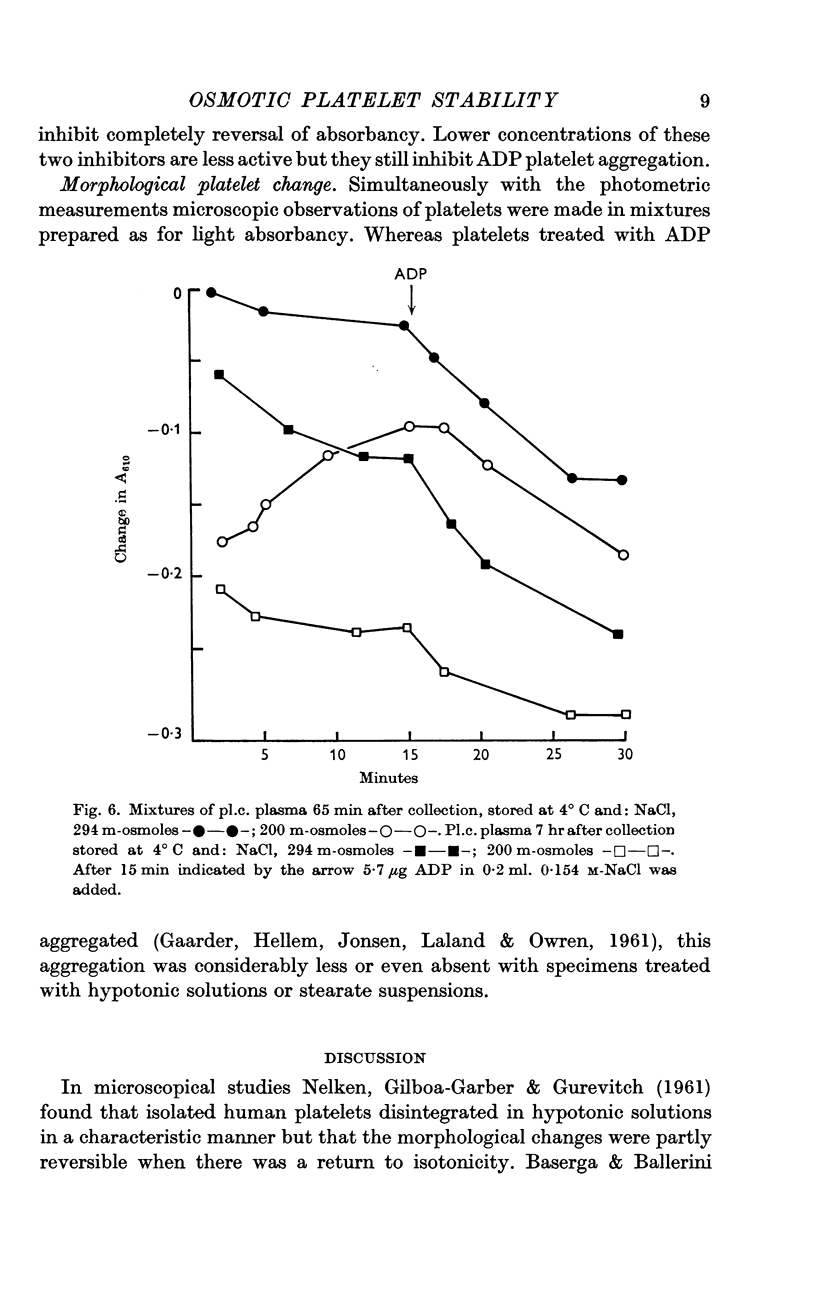
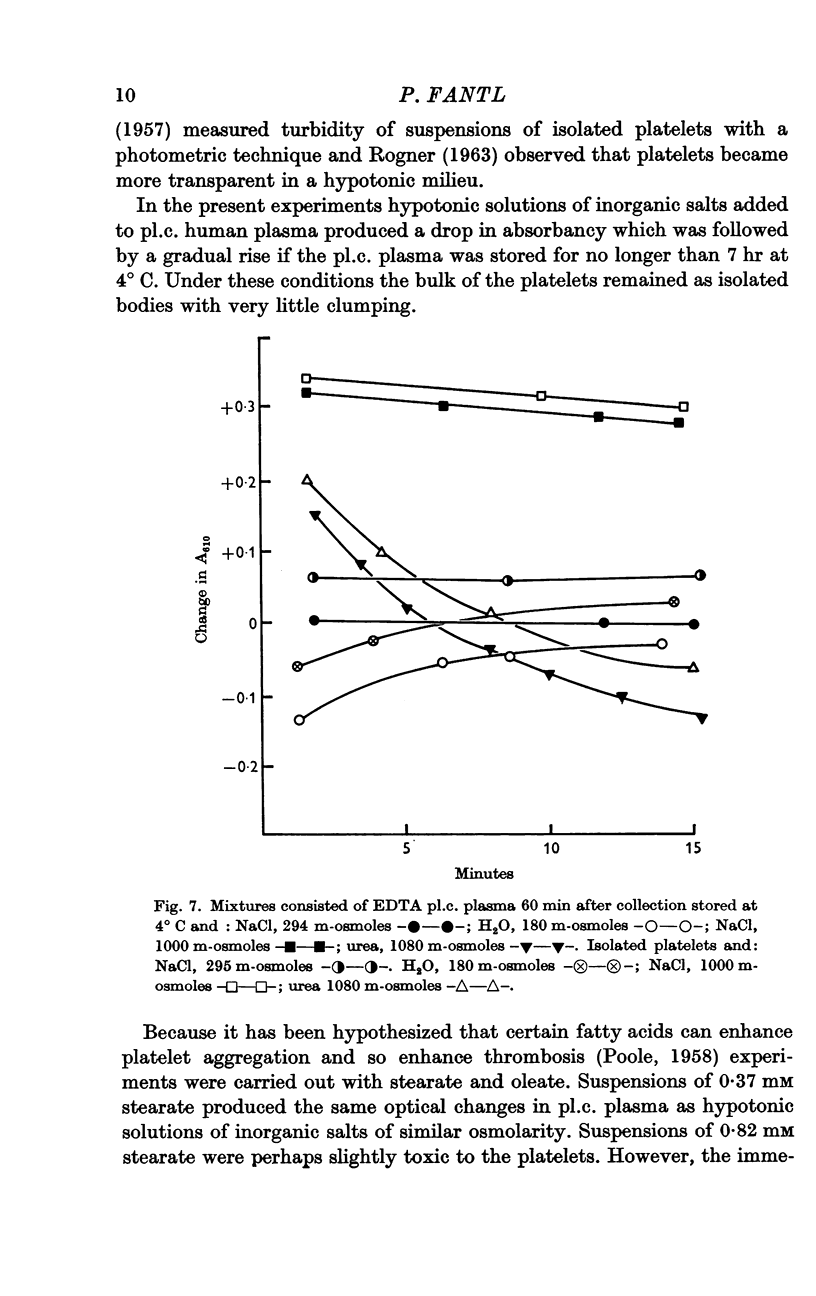
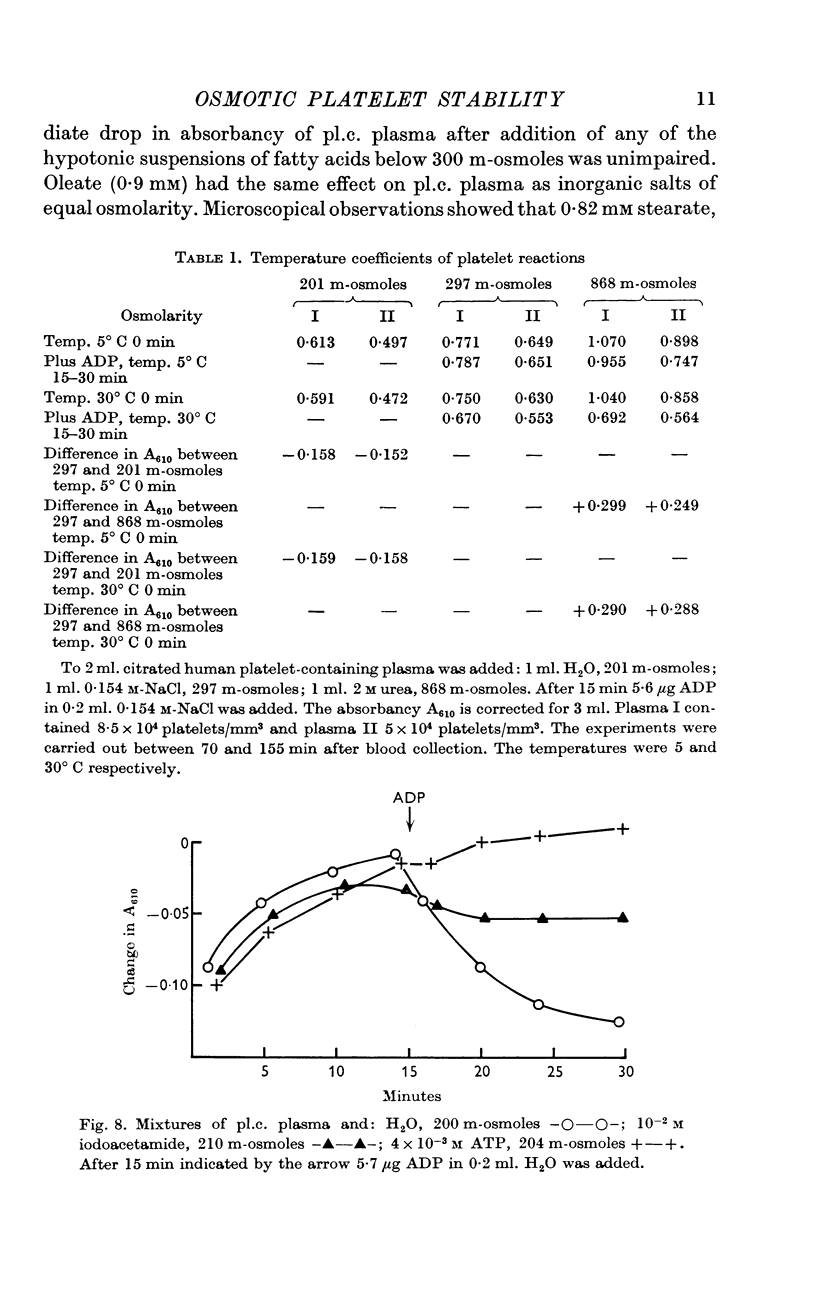
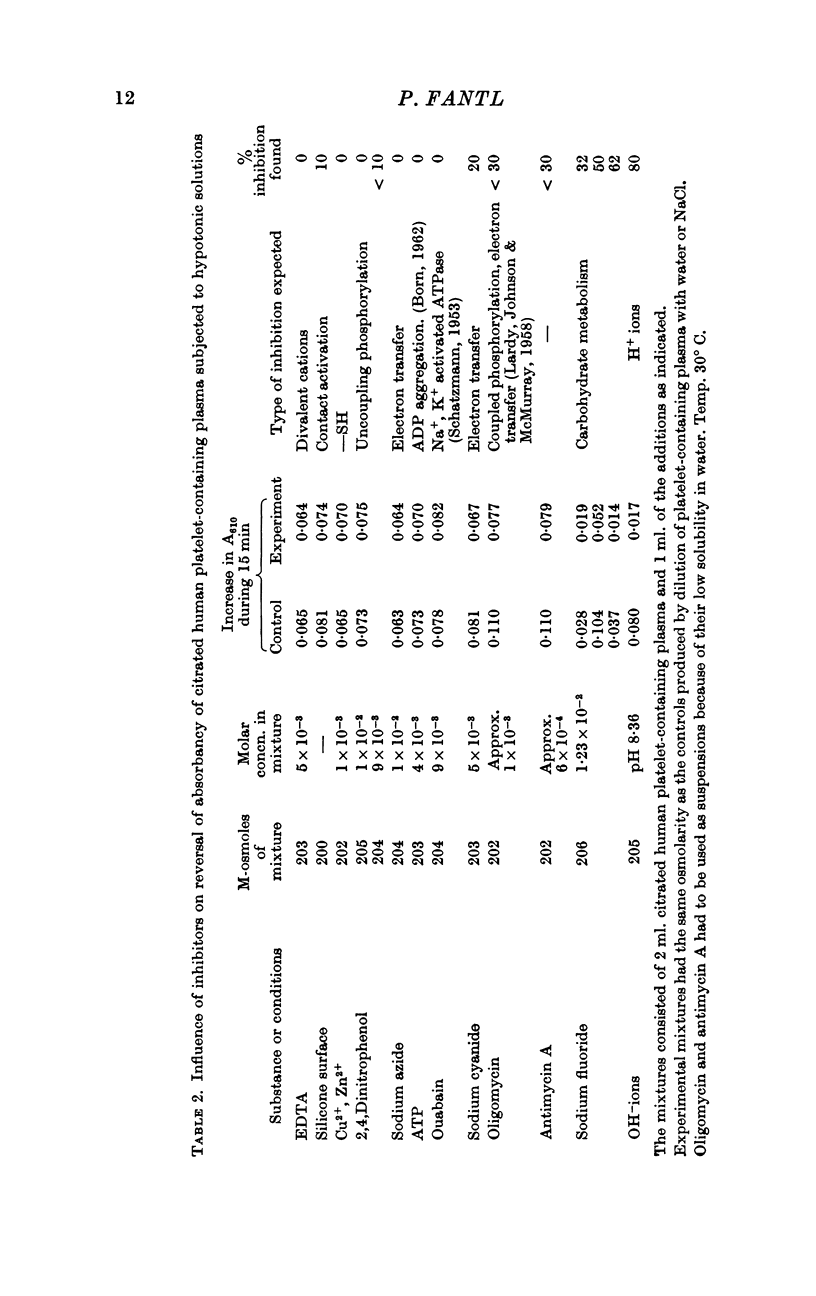
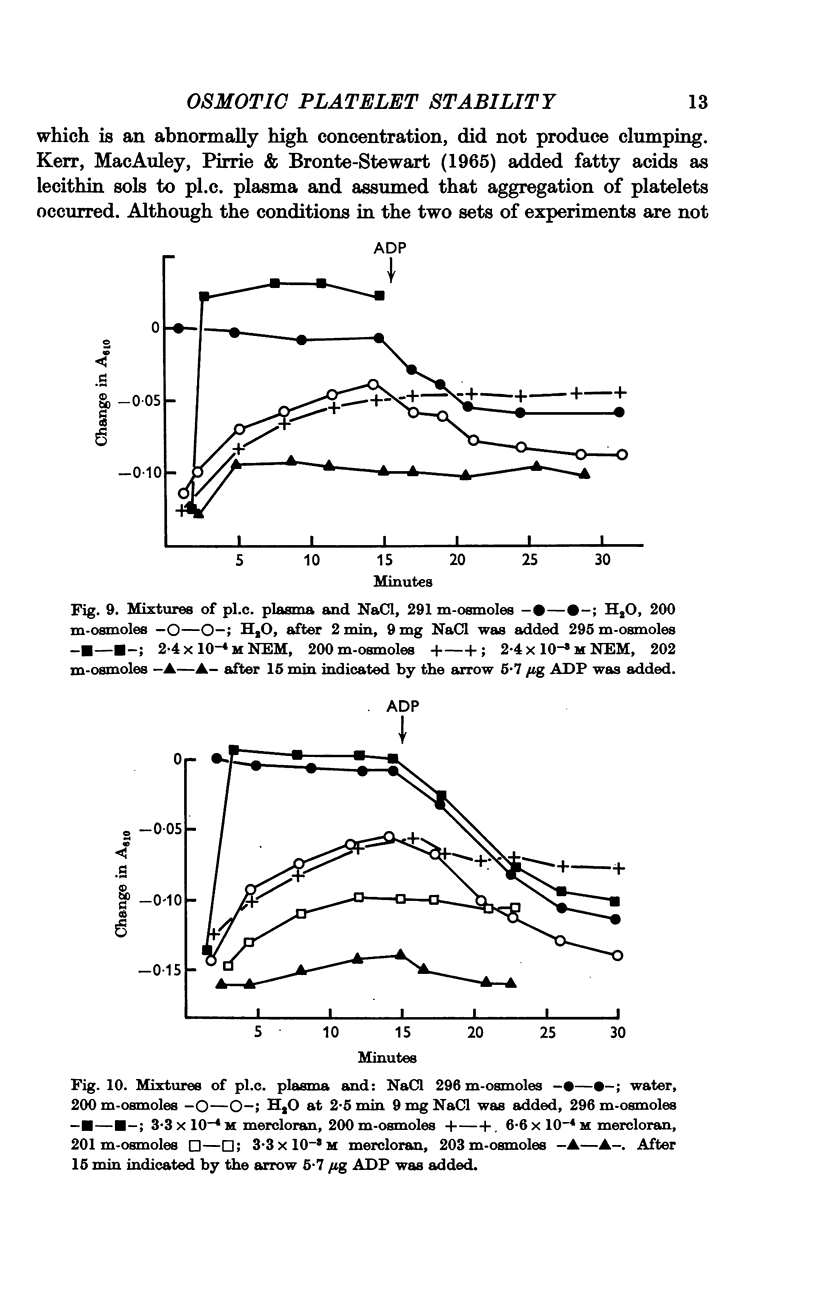
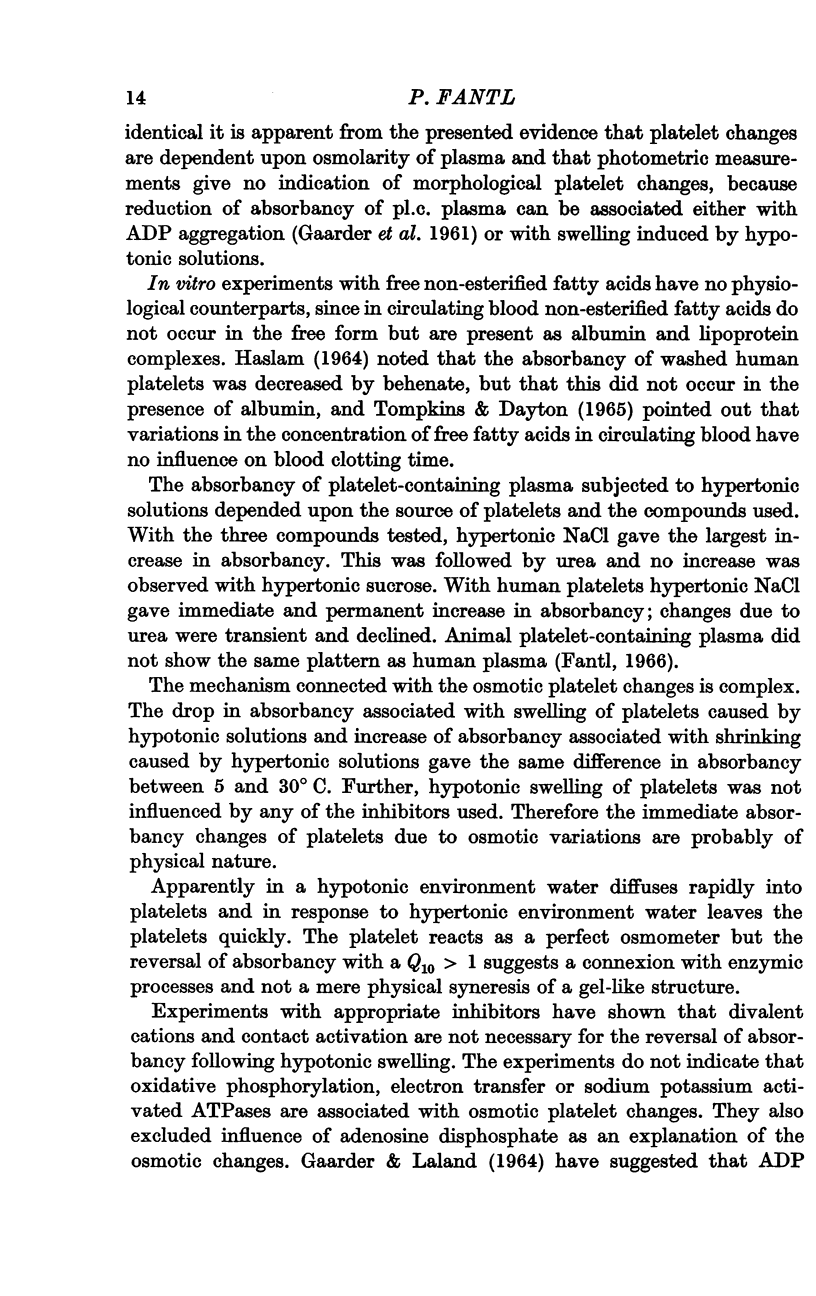
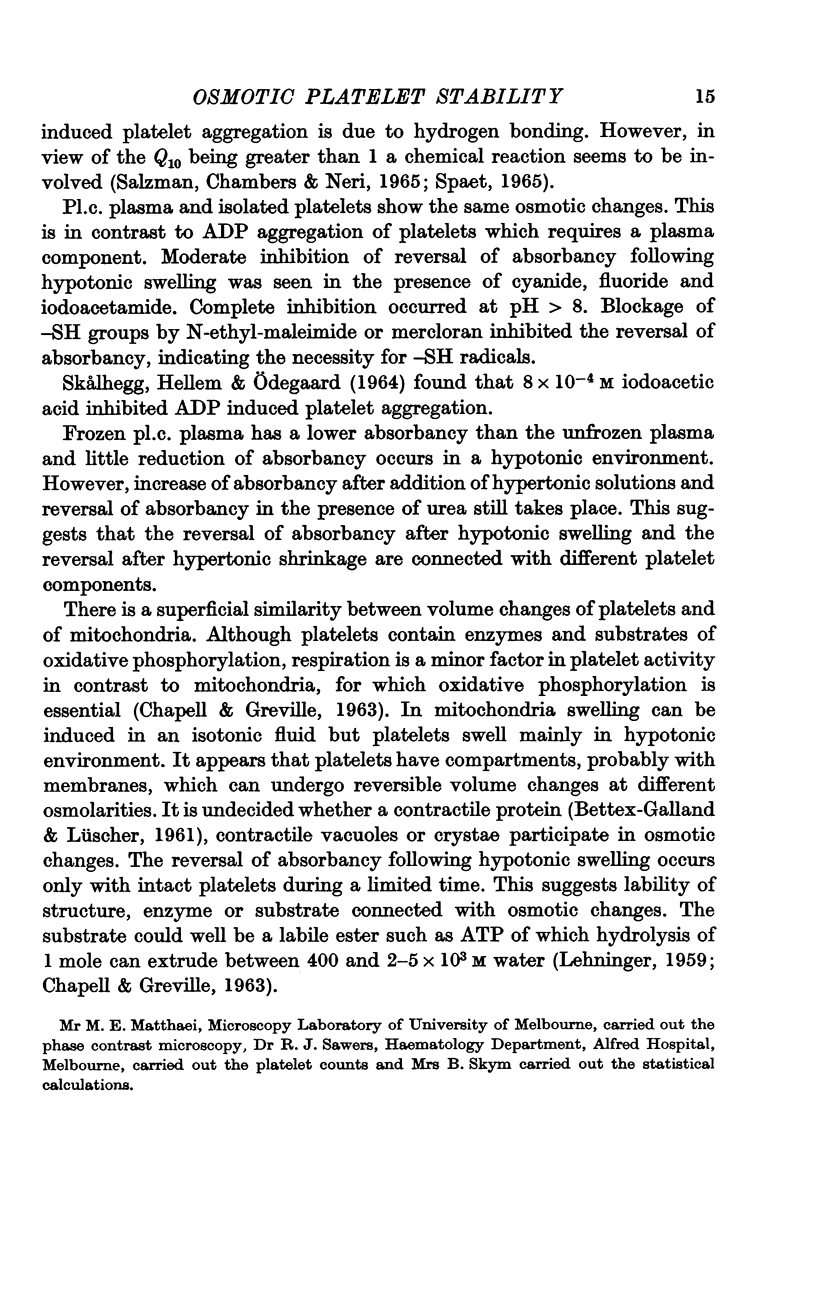
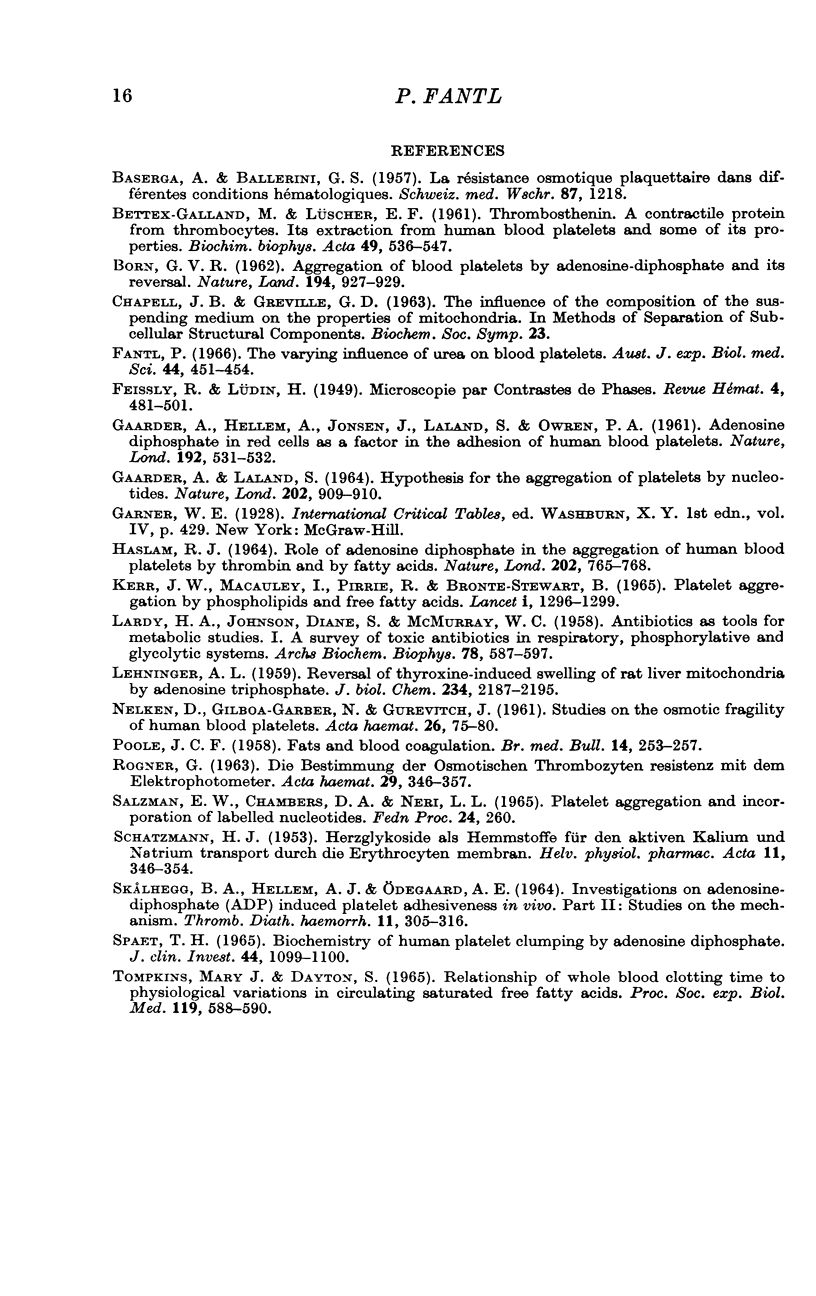
Selected References
These references are in PubMed. This may not be the complete list of references from this article.
- BASERGA A., BALLERINI G. La résistance osmotique plaquettaire dans différentes conditions hématologiques. Schweiz Med Wochenschr. 1957 Oct 2;87(39-40):1218–1220. [PubMed] [Google Scholar]
- BORN G. V. Aggregation of blood platelets by adenosine diphosphate and its reversal. Nature. 1962 Jun 9;194:927–929. doi: 10.1038/194927b0. [DOI] [PubMed] [Google Scholar]
- FEISSLY R., LUDIN H. Microscopie par contrastes de phases; applications à l'hématologie. Rev Hematol. 1949;4(3):481–501. [PubMed] [Google Scholar]
- Fantl P. The varying influence of urea on blood platelets. Aust J Exp Biol Med Sci. 1966 Aug;44(4):451–454. doi: 10.1038/icb.1966.42. [DOI] [PubMed] [Google Scholar]
- GAARDER A., JONSEN J., LALAND S., HELLEM A., OWREN P. A. Adenosine diphosphate in red cells as a factor in the adhesiveness of human blood platelets. Nature. 1961 Nov 11;192:531–532. doi: 10.1038/192531a0. [DOI] [PubMed] [Google Scholar]
- GAARDER A., LALAND S. HYPOTHESIS FOR THE AGGREGATION OF PLATELETS BY NUCLEOTIDES. Nature. 1964 May 30;202:909–910. doi: 10.1038/202909a0. [DOI] [PubMed] [Google Scholar]
- HASLAM R. J. ROLE OF ADENOSINE DIPHOSPHATE IN THE AGGREGATION OF HUMAN BLOOD-PLATELETS BY THROMBIN AND BY FATTY ACIDS. Nature. 1964 May 23;202:765–768. doi: 10.1038/202765a0. [DOI] [PubMed] [Google Scholar]
- HELLEM A. J., ODEGAARD A. E. INVESTIGATIONS ON ADENOSINE DIPHOSPHATE (ADP) INDUCED PLATELET ADHESIVNESS IN VITRO. II. STUDIES ON THE MECHANISM. Thromb Diath Haemorrh. 1964 Jul 31;11:305–326. [PubMed] [Google Scholar]
- KERR J. W., MACAULAY I., PIRRIE R., BRONTE-STEWART B. PLATELET-AGGREGATION BY PHOSPHOLIPIDS AND FREE FATTY ACIDS. Lancet. 1965 Jun 19;1(7399):1296–1299. doi: 10.1016/s0140-6736(65)92781-9. [DOI] [PubMed] [Google Scholar]
- LARDY H. A., JOHNSON D., McMURRAY W. C. Antibiotics as tools for metabolic studies. I. A survey of toxic antibiotics in respiratory, phosphorylative and glycolytic systems. Arch Biochem Biophys. 1958 Dec;78(2):587–597. doi: 10.1016/0003-9861(58)90383-7. [DOI] [PubMed] [Google Scholar]
- LEHNINGER A. L. Reversal of thyroxine-induced swelling of rat liver mitochondria by adenosine triphosphate. J Biol Chem. 1959 Aug;234(8):2187–2195. [PubMed] [Google Scholar]
- NELKEN D., GILBOA-GARBER N., GUREVITCH J. Studies on the osmotic fragility of human blood platelets. Acta Haematol. 1961;26:75–80. doi: 10.1159/000206643. [DOI] [PubMed] [Google Scholar]
- POOLE J. C. Fats and blood coagulation. Br Med Bull. 1958 Sep;14(3):253–258. doi: 10.1093/oxfordjournals.bmb.a069692. [DOI] [PubMed] [Google Scholar]
- ROGNER G. DIE BESTIMMUNG DER OSMOTISCHEN THROMBOZYTENRESISTENZ MIT DEM ELEKTROPHOTOMETER. Acta Haematol. 1963 Jun;29:346–357. doi: 10.1159/000207982. [DOI] [PubMed] [Google Scholar]
- SCHATZMANN H. J. Herzglykoside als Hemmstoffe für den aktiven Kalium- und Natriumtransport durch die Erythrocytenmembran. Helv Physiol Pharmacol Acta. 1953;11(4):346–354. [PubMed] [Google Scholar]
- TOMPKINS M. J., DAYTON S. RELATIONSHIP OF WHOLE BLOOD CLOTTING TIME TO PHYSIOLOGICAL VARIATIONS IN CIRCULATING SATURATED FREE FATTY ACIDS. Proc Soc Exp Biol Med. 1965 Jun;119:588–590. doi: 10.3181/00379727-119-30245. [DOI] [PubMed] [Google Scholar]


